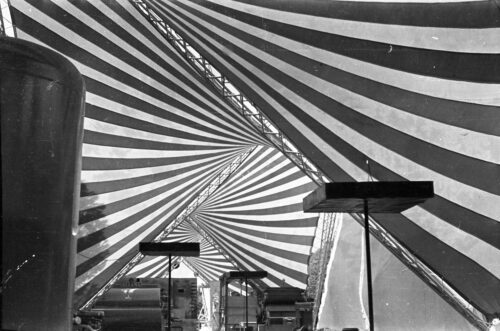Polish pavilion at the Izmir International Fair in Turkey, 1955
The Polish pavilion at the Izmir International Fair, nicknamed ‘Flying Carpets’, is one of the numerous fair pavilions designed by Oskar Hansen (1922–2005) in the late 1950s. Such pavilions served as a testing ground for Hansen’s ideas.
The HT structure, also known as the HT system, developed by Hansen and Lech Tomaszewski (1926–82) for the pavilion was a modular system of 8×8 metre hyperbolic paraboloid tensile structures that allowed the creation of continuous, infinite structures. The modular parts were not only easy to transport, but could be transformed depending on the spatial requirements of the exhibition. The pavilion’s fabric roof was constructed using this method, creating an attractive op-art effect that provided a vibrant backdrop for displaying a wide range of Polish products. The flowing space of the pavilion, without delimited interior spaces, reflected the concept of Open Form, being transformable, flexible, and open to further development.


